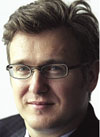Structured retail products have long proved fertile ground for both banks and investors. Natasha de Terán explores the European landscape.
In many ways, retail networks dragged many otherwise reluctant investors into the equity markets at the end of the last century through structured products. This was useful not only for the distributors and structurers who were able to bank lucrative profits – but also for European savers.
Having previously invested mainly in money market savings accounts and government-issued interest-bearing securities, these investors were suddenly faced with plummeting interest rates and the prospect of wading unaccompanied into the equity markets. Structured products were useful alternatives.
Retaining exposure
The most conservative investors left the market in the wake of the 2001 stock market collapse – some with quite substantial injuries – but the more equity-biased and aggressive investors decided to keep their equity market exposure through structured products.
Arnaud Sarfati, head of pricing and new products at Société Générale (SG), believes that, broadly speaking, structured product investors can still be split into these two camps.
“This means there are the investors with short-term memories, who tend to be very optimistic and who are ready to go for more aggressive bets, and then there are the investors with longer-term memories who tend to be much more conservative and have a preference for guaranteed products,” he says.
So although it may be useful to talk about and look at the structured product market on a country-by-country basis, Mr Sarfati believes that comparing the similarities across countries can be just as interesting as comparing the differences between them. “Retail networks all over Europe have to cope with both types of investor and, as a result, we have found that individual networks in, say, France have become more similar to networks in, say, Spain than to others in France.”
Still, some broad regional divisions can be made. For instance, Mr Sarfati says continental European investors will see a capital guaranteed product as being capital protection with upside equity exposure.
Conversely, UK, US, Dutch and Scandinavian investors will see it as an equity investment plus protection. “In essence, that means that continental investors tend to be much more conservative and focus on a product’s risk-return profile, while the more Anglo-Saxon-type investors tend to be more natural equity buyers and much more story driven,” he says.
Making national distinctions is still useful for many, however.
|
|
Pierre Bes, managing director and head of private banking coverage for investor solutions at Barclays Capital, says: “In all the countries, you will find a wide array of products and some common themes, but there are also still some distinguishable features in most of them.” |
|
|
Kim Gayer, head of structured equity derivatives sales at Deutsche Bank, says business at his bank is up 40% from the start of 2007 on the self-directed side of the business, while the third party and white labelling business is up about 20%. |




